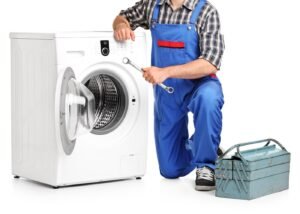Introduction
The MERN stack, comprising MongoDB, Express.js, React, and Node.js, offers a powerful framework for building full-stack applications. RESTful APIs, integral to this stack, enable efficient communication between the server and client by adhering to the principles of Representational State Transfer.
This guide explores the process of creating RESTful APIs within the MERN stack, covering backend setup, data modeling, routing, and integration with a React frontend.
Creating Restful APIs In Mern Stack
Creating RESTful APIs in the MERN stack involves setting up a backend server with Node.js and Express, connecting to a MongoDB database, and possibly interacting with a front-end built with React. One can join the MERN Full Stack Developer Course to learn how to create Restful APIs in MERN Stack.
Here’s a detailed guide on how to create RESTful APIs using the MERN stack:
1. Set Up Your Project
Start by setting up the basic structure of your MERN stack application.
1.1 Install Node.js and NPM
Ensure you have Node.js and npm (Node Package Manager) installed. You can download them from nodejs.org.
1.2 Initialize Your Project
Create a new directory for your project and initialize it with npm:
“mkdir my-mern-api
cd my-mern-api
npm init –y”
2. Set Up the Backend
2.1 Install Dependencies
You need to install Express, Mongoose (for MongoDB), and other useful packages:
“npm install express mongoose body-parser cors”
2.2 Create the Server File
Create a file named server.js in the root directory of your project:
“// server.js
const express = require(‘express’);
const mongoose = require(‘mongoose’);
//++
const bodyParser = require(‘body-parser’);
const cors = require(‘cors’);
//++
const app = express();
const PORT = process.env.PORT || 5000;
// Middleware
app.use(bodyParser.json());
app.use(cors());
// MongoDB Connection
const dbURI = ‘mongodb://localhost:27017/mydatabase’; // Replace with your MongoDB URI
mongoose.connect(dbURI, { useNewUrlParser: true, useUnifiedTopology: true })
.then(() => console.log(‘MongoDB connected’))
.catch(err => console.log(err));
// Routes
app.get(‘/’, (req, res) => {
res.send(‘Hello World!’);
});
// Start Server
app.listen(PORT, () => {
console.log(`Server running on port ${PORT}`);
});”
2.3 Define Models
Create a directory called models and define your data models. Refer to the MERN Full Stack Developer Course for the best guidance. For example, create a file named User.js:
“// models/User.js
const mongoose = require(‘mongoose’);
const UserSchema = new mongoose.Schema({
name: { type: String, required: true },
email: { type: String, required: true, unique: true },
password: { type: String, required: true },
});
module.exports = mongoose.model(‘User’, UserSchema);”
2.4 Create Routes
Create a directory called routes and add route files. For instance, create userRoutes.js:
“// routes/userRoutes.js
const express = require(‘express’);
* const router = express.Router();
const User = require(‘../models/User’);
// Get all users
router.get(‘/users’, async (req, res) => {
try {
const users = await User.find();
res.json(users);
} catch (err) {
res.status(500).json({ message: err.message });
}
});
// Get user by ID
router.get(‘/users/:id’, async (req, res) => {
try {
const user = await User.findById(req.params.id);
if (user) {
res.json(user);
} else {
res.status(404).json({ message: ‘User not found’ });
}
} catch (err) {
res.status(500).json({ message: err.message });
}
});
// Create a new user
router.post(‘/users’, async (req, res) => {
const user = new User({
name: req.body.name,
email: req.body.email,
password: req.body.password,
});
try {
const newUser = await user.save();
res.status(201).json(newUser);
} catch (err) {
res.status(400).json({ message: err.message });
}
});
// Update a user
router.patch(‘/users/:id’, async (req, res) => {
try {
const user = await User.findByIdAndUpdate(req.params.id, req.body, { new: true });
if (user) {
res.json(user);
} else {
res.status(404).json({ message: ‘User not found’ });
}
} catch (err) {
res.status(400).json({ message: err.message });
}
});
// Delete a user
router.delete(‘/users/:id’, async (req, res) => {
try {
const user = await User.findByIdAndDelete(req.params.id);
if (user) {
res.json({ message: ‘User deleted’ });
} else {
res.status(404).json({ message: ‘User not found’ });
}
} catch (err) {
res.status(500).json({ message: err.message });
}
});
module.exports = router;”
2.5 Connect Routes to Server
Update server.js to use the routes:
“// Add this line after other middleware
const userRoutes = require(‘./routes/userRoutes’);
app.use(‘/api’, userRoutes);”
3. Test Your API
Use tools like Postman or cURL to test your API endpoints. The Mern Stack Course in Hyderabad offers the best guidance for aspiring professionals. You can test the following:
- GET /api/users – Retrieve all users
- GET /api/users/:id – Retrieve a specific user by ID
- POST /api/users – Create a new user
- PATCH /api/users/:id – Update a specific user
- DELETE /api/users/:id – Delete a specific user
4. Set Up the Frontend with React
4.1 Create a React App
If you haven’t already, set up a new React application in a separate directory:
“npx create-react-app my-mern-client
cd my-mern-client”
4.2 Install Axios
To make HTTP requests to your API, install Axios:
“npm install axios”
4.3 Create Components
Create React components to interact with your API. For instance, you can create a UserList component to display users:
“// src/components/UserList.js
import React, { useState, useEffect } from ‘react’;
import axios from ‘axios’;
const UserList = () => {
const [users, setUsers] = useState([]);
useEffect(() => {
axios.get(‘http://localhost:5000/api/users’)
.then(response => setUsers(response.data))
.catch(error => console.error(‘Error fetching users:’, error));
}, []);
return (
<div>
<h1>User List</h1>
<ul>
{users.map(user => (
<li key={user._id}>{user.name} – {user.email}</li>
))}
</ul>
</div>
);
};
export default UserList;”
4.4 Run Your Application
Start your React application with:
“npm start”
Make sure your backend server is also running. You should now be able to interact with your API through the React front end.
Conclusion
Creating RESTful APIs in the MERN stack involves setting up a Node.js server with Express, connecting to a MongoDB database, defining data models, and creating routes for API endpoints. The Mern Stack Course in Hyderabad offers the best training to aspiring professionals in this field. Integrating these APIs with a React frontend allows you to build a full-stack application. By following the steps outlined, you’ll have a basic RESTful API up and running, ready to be expanded with additional features and functionality.






Great post on setting up RESTful APIs with the MERN stack! This guide broke down the whole process into understandable steps even for those new to the framework.
Quick question though—when it comes to setting up the routing, do you have any recommendations on handling complex queries or integrating with other data sources?
I found a useful blog on https://sebbie.pl/tag/javascript/ that offers insight into managing server-side functionalities, which complements what you’ve explained here. Definitely worth checking out. Thanks for sharing this practical guide!
Nice breakdown on setting up a RESTful API with the MERN stack! It’s super helpful to see each step laid out so clearly. I was wondering, when working with RESTful APIs in MERN, how do you handle user authentication?
I noticed a similar discussion over at https://sebbie.pl/tag/javascript/ where they cover how authentication can be managed with JSON Web Tokens. Do you have any tips on integrating JWT securely in a MERN project? Thanks!
Nice walk-through on setting up RESTful APIs with MERN! You broke it down really well, especially considering the backend setup.
Just wondering, in terms of API optimization, how do you ensure efficiency as your application scales? I’ve been diving into similar topics over at https://sebbie.pl/tag/javascript/, where they touch on aspects like cache implementation using JavaScript, which could be related.
Thanks for the insights—it’s really helpful for beginners like me!
interesting